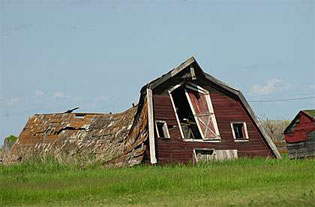
“A year ago, UCLA’s respected Anderson Forecast declared the housing market a bubble and identified the prospect of a sharp housing-market downturn as the biggest risk to the U.S. economy….[says the boom isn’t even over [WSJ].](http://online.wsj.com/article_print/SB113393936372516062.html)
The [UCLA Anderson Forecast](http://uclaforecast.com/event/eventDisplay.asp?iEventID=28) correctly predicted the 2001 recession.
The pushed back their original prediction that the US housing industry would experience a slow down beginning in mid-2005. They changed their estimate to early 2006.
[The slowdown is likely to last several years, with as many as 500,000 construction jobs and 300,000 financial sector positions lost [AP].](http://news.moneycentral.msn.com/provider/providerarticle.asp?feed=AP&Date=20051207&ID=5333955)>The forecast said eight of the last 10 economic
>recessions were started by housing market
>slowdowns. Though the coming cooldown will
>cause a drag on the nation’s economy, it will
>fall short of triggering a recession, the forecast
> said.
“The report cited several signs that the decline could be under way:
* New construction of housing in October was down 5.6 percent from the previous month, with new construction of single-family housing accounting for a 3.7 percent dip.
* New home sales have declined.
* Applications for home mortgages have trended downward since late September as rates increased.
* In some regions, homes are remaining unsold longer and the pace of housing construction is outpacing population growth, which could spell a decline in demand.”
This is consistent with I think most people’s expectations. The volume of new development has been growing over the past several years and has finally hit a saturation point.

